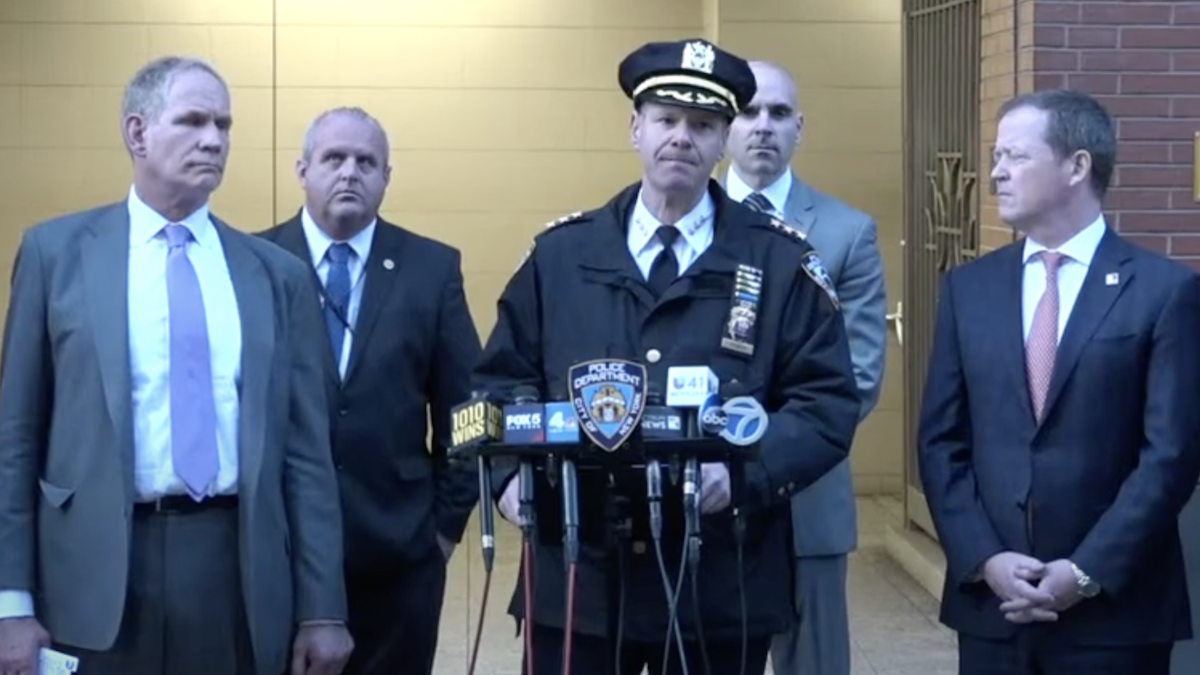
There’s been a marked increase in celebrities like Oprah Winfrey, Beyonce, and Kim Kardashian using their platforms to try to spring criminals from jail. Some of these cases may merit clemency, but one that does not is the current criminal du jour, a convicted murderer and rapist named Rodney Reed.
While the celebrity public relations effort is gaining momentum, the facts and circumstances of the case are being twisted to support an insidious false narrative that does not serve justice. Because Reed is scheduled to be executed on November 20, the campaign for Texas Gov. Greg Abbott to delay his execution is hot right now.
But the evidence that was used to convict Reed still holds up. Thus delaying his execution or granting clemency would be a bad decision, suspending justice from a man convicted of heinous crimes and sowing doubt into the public’s mind about the integrity of the American justice system.
A Young Woman Is Raped and Murdered
The basic facts of the case are as follows. On April 23, 1996, Stacey Stites, a 19-year-old girl engaged to be married in just a few weeks to a police officer, was found dead in a field about 45 minutes east of Austin in Bastrop, Texas. She had been raped and assaulted.
Over the course of the investigation, DNA samples were taken from 25 potential suspects, only for each to be ruled out. It took investigators nearly a year to even identify Reed as a suspect, and only then after he had been implicated in other sex crimes. DNA collected during those investigations ultimately linked him to Stites’ rape and murder. His semen was found in her body and his saliva on her breasts, dating from within the same timeframe as her rape and murder.
At trial, prosecutors recounted how Reed initially told investigators he “didn’t know her, never met her, never talked to her, had no idea who she is” — until they told him they had DNA linking him to the crime. Faced with that damning proof of a connection, he subsequently claimed a consensual — although conveniently secret — relationship with Stites, for which there is no corroborating evidence besides two-decades-later hearsay. He still maintains his innocence.
Other circumstantial evidence is also compelling, such as Stites’s truck having the seats and mirrors adjusted to a 6’2” person, Reed’s height, and the fact he lived near the area and was often seen outside walking around in the middle of the night.
Reed’s legal team claims Reed had consensual sex with Stites before her rape and murder. It also provided witness statements suddenly claiming to remember their secret relationship nearly two decades after the fact, but the supposed relationship was never hinted at or suggested by anyone in the year prior to Reed being identified as a suspect and there was zero corroboration for his far-fetched claim until claimed remembrances two decades after the murder.
Rodney Reed Has Been Indicted for Several Other Rapes
Reed’s team also sought to cast suspicion on Stites’ fiancé. He was ruled out as a suspect during the investigation, but 11 years later was convicted and sent to prison for the kidnapping and sexual assault of a woman in his custody in 2007.
Prosecutors reject that idea that Reed is innocent and point to indictments alleging he brutally raped a 12-year-old girl, repeatedly raped the mother of his two children (once in front of them), repeatedly raped and assaulted an intellectually disabled woman he was “dating” (whose rape ultimately provided the DNA sample connecting him to the Stites capital case), and the rape of another woman who was walking home in a secluded area.
Reed also attempted to rape yet another woman six months after the rape and murder of Stites in very similar circumstances to hers. The woman, who narrowly escaped, also provided details that led to the initial suspicion of Reed in the Stites case, later bolstered by DNA evidence inside and outside Stites’s body.
It is important to note that the jury didn’t know any of these other allegations about Reed during the trial, only that the police “had reason to suspect him.” The jury found him guilty beyond a reasonable doubt, based upon the evidence presented at trial. It is this evidence that his advocates and supplicants in the media would have you believe has either been untested or insufficiently tested. They claim there could be “new” evidence, and investigators have “recanted” their statements at trial. But is any of that true? No, it’s not.
The Media Narrative Misrepresents Essential Facts
A New York Times headline proclaimed “Texas Plans to Execute Rodney Reed, Despite New Evidence” and claimed the “state’s forensic investigators made critical errors regarding the timeline of the killing, which some investigators later admitted in affidavits.” The Texas Tribune makes the unsubstantiated assertion in its headline that Reed’s “guilt is widely doubted” and hypes that the “suspected murder weapon has gone untested for DNA.”
Reason Magazine made similar claims in its article “New DNA Evidence Likely Exonerates a Texas Death Row Inmate. The Government Won’t Test It.” Their article stated “there is new evidence available to the state for DNA testing” and went on to assert “the state won’t test it, and the U.S. Supreme Court declined to take a closer look at the matter. Current precedent from the high court holds that defendants have no constitutional right to DNA testing.”
This all leaves the distinct impression that exculpatory evidence is purposely being spirited away and deliberately untested by a system aligned against Reed. The truth is different. There isn’t any “new” DNA evidence, but an argument over whether existing evidence, primarily a belt fragment alleged to have been the murder weapon, should be tested for “touch DNA,” a technique that was not available to investigators at the time. Reed’s defense claims the DNA of the “real” killer could be found on these items with the new technique, and thus exonerate Reed.
Most will agree that evidence should be tested for DNA and when new scientific methods become available during the course of an appeal it is reasonable to expect prosecutors to accommodate a new testing technique. However in this case, even Reed’s experts concede that the evidence in question was contaminated because it was not controlled in a way necessary for the modern testing technique to be fruitful.
The Texas Court of Criminal Appeals affirmed that the items in question were touched with ungloved hands by trial attorneys, court personnel, and even potentially jurors. There is no allegation that evidence was intentionally mishandled, it’s simply that best practices have matured over the past 20 years as new DNA testing methods have provided rationale for better preservation techniques. The Criminal Appeals ruling notes that even if there were other DNA found on the belt, it wouldn’t meet a “preponderance of evidence” standard to change the guilty verdict against Reed.
Thus the media narrative that the prosecutors won’t allow testing of new evidence is strikingly false. Doing so will not yield exculpatory information for Reed. There is thus no reason to delay his execution.
What About Time of Death?
The Travis County medical examiner also doesn’t actually admit an error or “recant,” as others have portrayed it, in his supplemental affidavit. He does say his testimony shouldn’t have been portrayed by the prosecution in the way it was about the accuracy of time of death findings related to how long sperm would remain in body cavities. His trial testimony pinned the time of Stites’s death at approximately 3:00 a.m., and used a narrow estimate for the length of time sperm remains detectable in body cavities to discount the defense’s argument of prior consensual sex.
“Reed says that he and Stites were in a casual relationship and had consensual sex the day before her disappearance,” recounts the Texas Tribune uncritically, adding “[Reed’s sperm] could have remained in Stites’ body for more than a day after consensual sex.”
It is true that more recent science shows that sperm can be detected longer than previously thought inside body cavities, but just because evidence could be older than initially thought doesn’t prove it actually is. Also, this argument conveniently leaves out the fact that investigators also found Reed’s DNA on Stites’s breasts (saliva) and in her panties, and both pieces of evidence are inconsistent with the “prior consensual sex” narrative, and not subject to the same “time window” arguments for DNA inside a body.
The award for the most wildly speculative and unsupported reporting surely goes to Reason Magazine, which claimed “several experts have concluded it’s scientifically impossible” for Reed to have been the killer. Neither the updated medical examiner’s testimony or Reed’s own expert suggested it was “impossible.” They just said their conclusions weren’t necessarily ironclad.
Texas Politicians Uncritically Jump on the Bandwagon
On 5 November, 26 Texas House members sent a letter to Abbott and the chairman of the Texas Board of Pardons and Paroles requesting he “grant a reprieve to Rodney Reed.” Sixteen state senators followed up with a similar letter on 8 November. It claims the case’s findings have been “called into serious question by compelling new witness statements and forensic evidence along with evidentiary gaps that could be filled with additional investigation and testing.”
Moderate Republican Rep. Jeff Leach was quick to characterize his support of the reprieve as “a beautiful thing when the people can work to restrain their government from possibly executing a man for a crime he didn’t commit.” While he stopped short of calling Reed innocent, he later followed up with a quote attributed to Ben Franklin, “it is better one hundred guilty persons should escape than that one innocent person should suffer.”
That’s the reality of it—the anti-death penalty crowd is invested in the narrative that the death penalty process is irreversibly and morally flawed. Their technique to shape public opinion is to suggest that every complicated aspect of our legal system is evidence of innocence or of a rigged system. Nobody wants innocents to suffer at the hands of the capital punishment system, but that is just a convenient talking point for what the anti-death penalty advocates ultimately want—a complete end to capital punishment.
Fanning the flames of the case absent any substantive evidence of a wrongful conviction erodes public trust in the U.S. justice system. Elected representatives should know better than to enable this sort of attack on the very system they swore to uphold. Given the intense “celebrification” of this cause and constant media malpractice in distorting the facts, we can expect more fanning of the flames of public opinion as Reed’s scheduled execution date of 20 November draws near.
All eyes are on Governor Abbott to see if he will cave to the public pressure to needlessly delay Reed’s execution, including a rally in front of the governor’s mansion Saturday, or if he will uphold the verdict his staff assisted with while he served as Texas attorney general.









